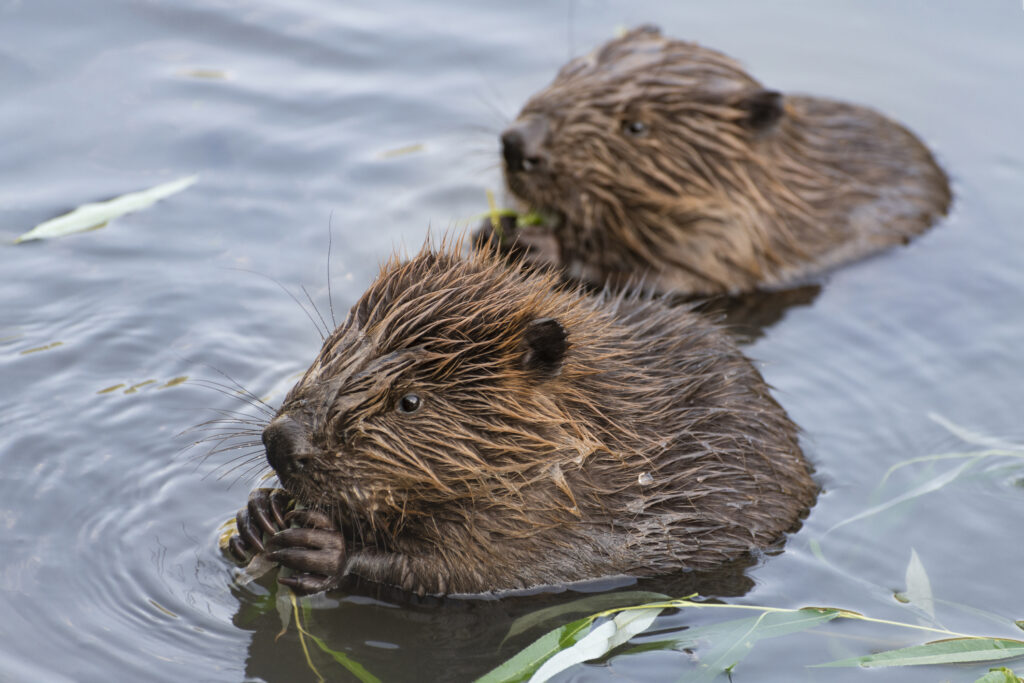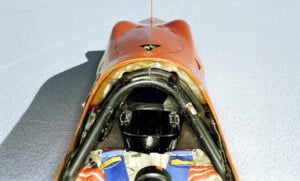Is it a bird? Is it a plane? Nope, it’s 76 parachuting beavers over Idaho. Strap in, this is the remarkable true story of when a fleet of beavers fell from the sky. Watch them in action below.

The project dates back to 1948, when the Idaho Fish and Game Department needed to deal with the growing nuisance beavers were proving to residents in a town called McCall. Their solution was to relocate the animals to the Chamberlain Basin nearly 200 miles away. The only issue was that planes couldn’t land there and it would have taken days to hike with dozens of beavers. An ambitious plan was hatched: send them in by air.
Instead of dropping loose beavers with parachutes on their back, they developed specially designed boxes with built-in parachutes to hold the beavers. When the box landed, the beavers were able to scramble out and set off on their new life in a remote corner of Idaho.
The Chamberlain Basin is a beaver’s paradise. The sweeping area is home to forests, streams and glacial lakes, and is part of the Sawtooth Mountain Range, now called the Frank Church River of No Return Wilderness Area.

The beavers were dropped from between 500 and 800 feet. Elmo W. Heter, the author of the brilliantly named report, Transplanting Beavers by Airplane and Parachute, wrote: “This height assures sufficient time for the ‘chute to set the box down gently.”
Designing a box that was secure enough to house the beavers, but would open and release them upon touching down, was the biggest challenge faced by Heter and his team. An initial prototype was made of woven willow, with the idea being that the beavers would simply gnaw their way out once they landed. Unfortunately, it turned out the beavers gnawed so quickly that there was a chance they broke through the box before reaching the ground.
Read More: Is this the elephant’s closest relative?
In the end, they settled on two separate lidless boxes, that were then hinged together. Holes were drilled for air, and a rope binding them and the parachute would hold the contraption together until it reached the ground. When the parachute collapsed, the hinges would snap open, freeing the beavers to roam their new home in Chamberlain Basin.
It seemed the project had one main stuntman during the testing phase. “Satisfactory experiments with dummy weights having been completed, one old male beaver, whom we fondly named Geronimo, was dropped again and again on the flying field,” Heter wrote. “Each time he scrambled out of the box, someone was on hand to pick him up. Poor fellow! He finally became resigned, and as soon as we approached him, would crawl back into his box ready to go aloft again.”

The day of the first official beaver drop was August 14, 1948. Eight crates of beavers set off on a twin-engine Beechcraft Travel Air, accompanied by a conservation officer and a pilot. This was just the start, and in the ensuing days, a total of 76 beavers plummeted into the wilderness.
Sadly, 75 of the 76 drops went to plain. For one poor chap, a lashing snapped and he managed to climb through a small gap and onto the top of the wooden box. At first, he stayed put, enjoying the crisp Idaho air as he plummeted towards the earth’s surface.
“Had he stayed where he was, all would have gone well,” Heter wrote. “[B]ut for some inexplicable reason, when the box was within 75 feet of the ground, he jumped or fell from the box.” Sadly the unnamed beaver did not survive the fall.
Veteran flier Geronimo was one of the first beavers to be set off. “You may be sure that he had a priority reservation on the first ship into the hinterland, and that three young females went with him,” Heter said. “Even there he stayed in the box for a long time after his harem was busy inspecting the new surroundings. However, his colony was later reported as very well established.”
Despite the lone casualty, the Idaho Department of Fish and Game considered the beaver project a success. Even if the parachutes were never returned, each drop was estimated to have cost taxpayers just seven dollars per beaver. In the following months, various hikers, backpackers, ranchers and forest rangers were also able to return most of the parachutes.
Soon enough, the intrepid beavers were completing dams and establishing colonies. Mission accomplished.





